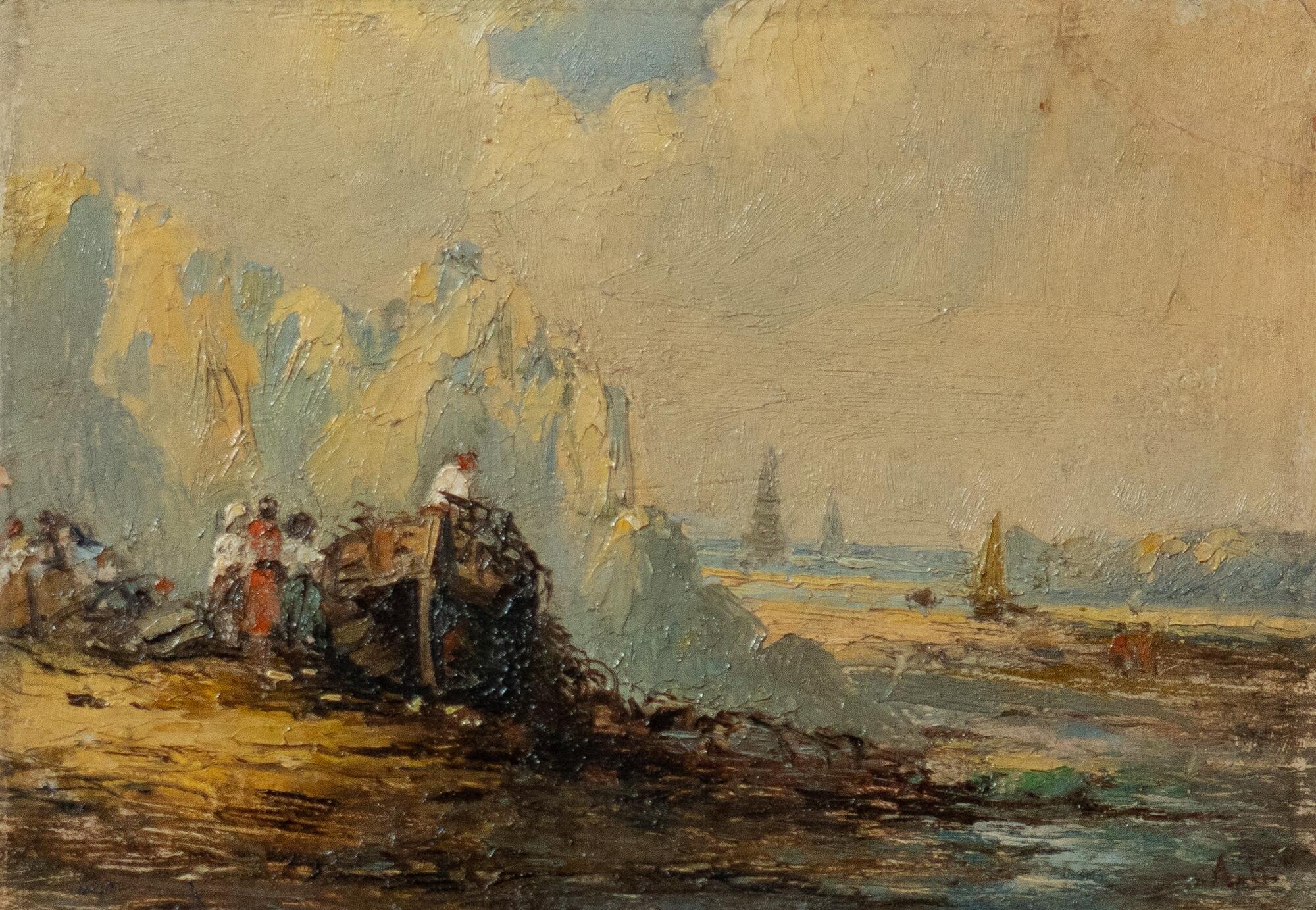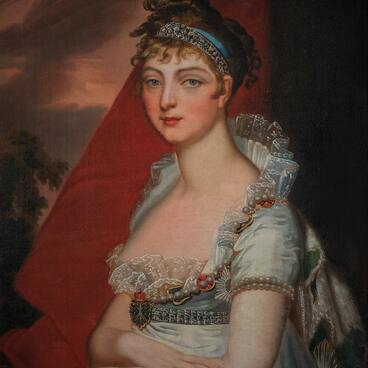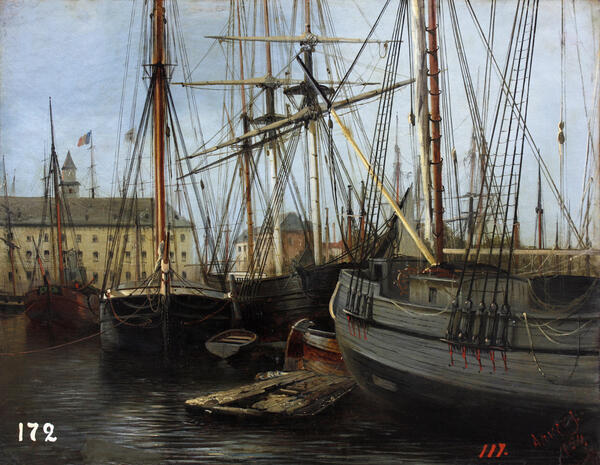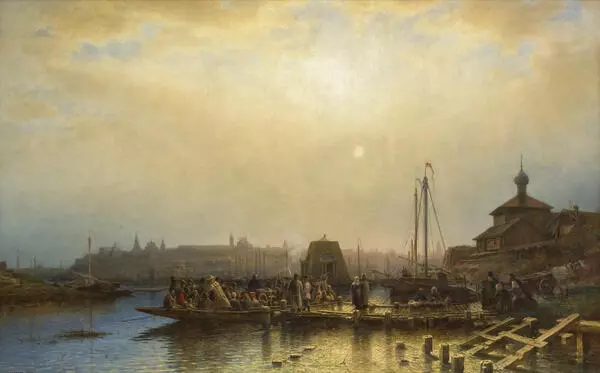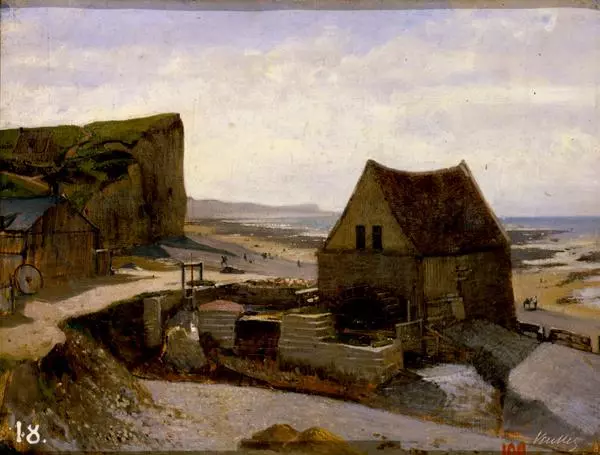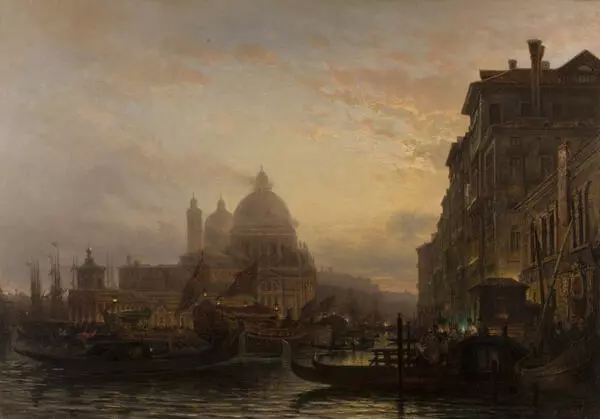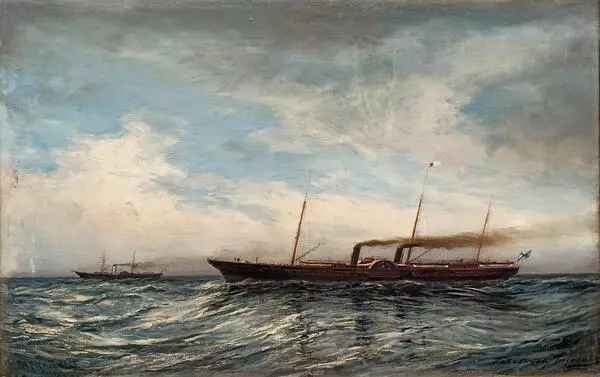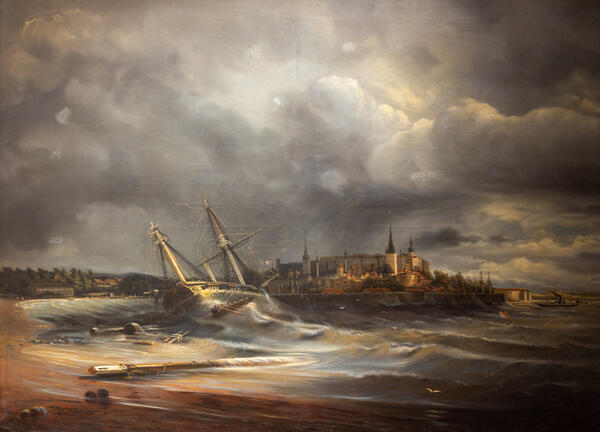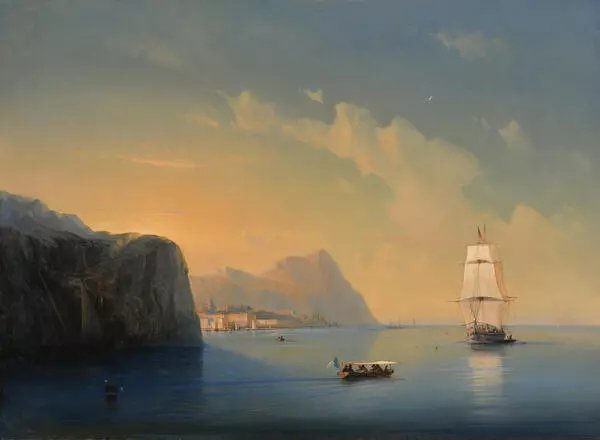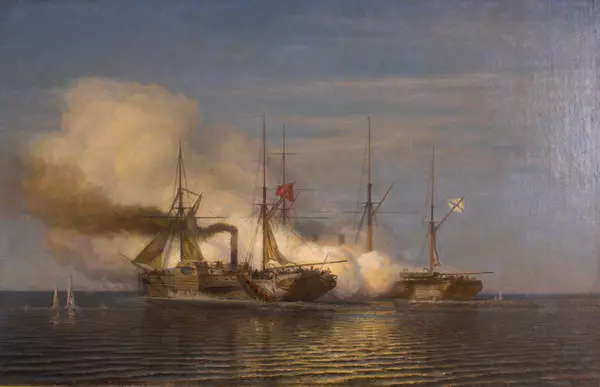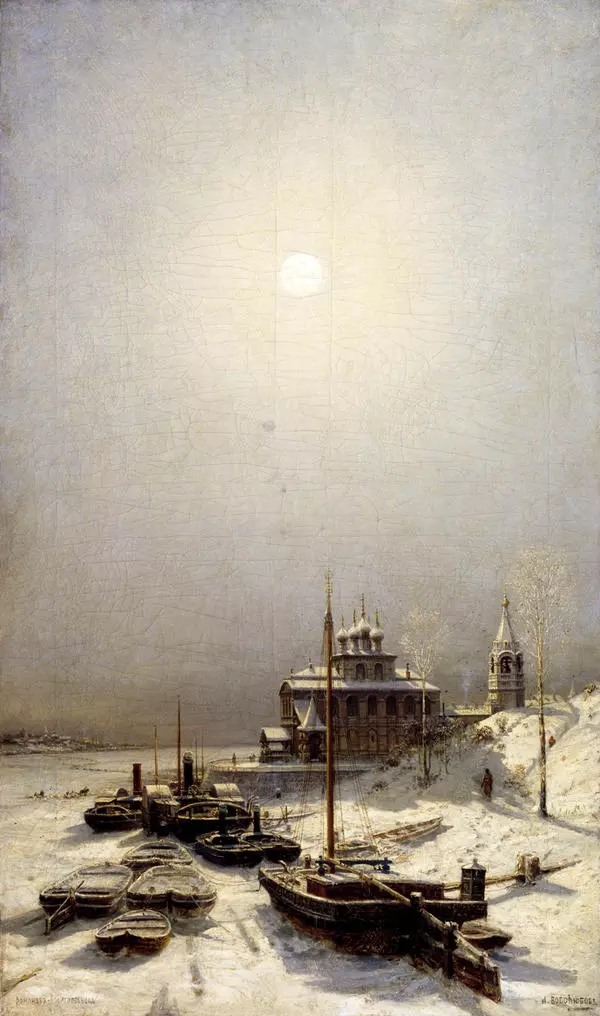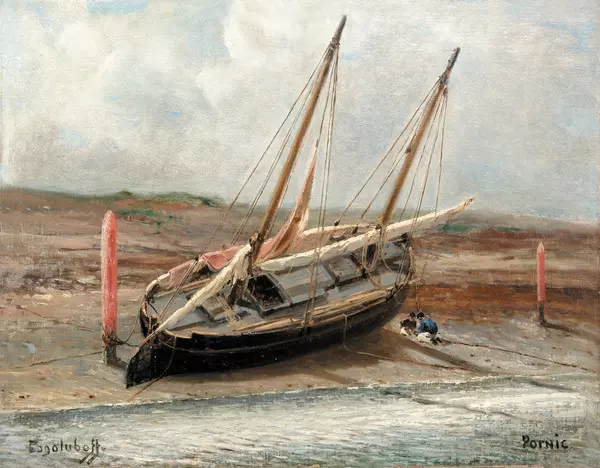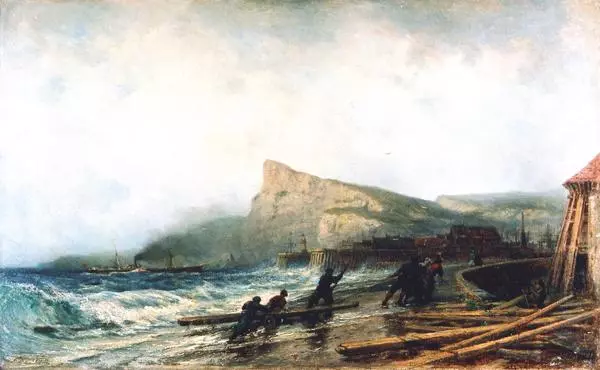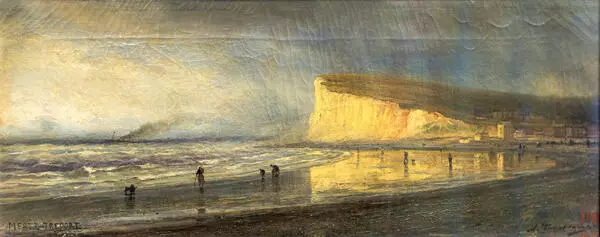Alexey Bogolyubov is a Russian marine painter, a master of battle marine painting, and the grandson of the writer Alexander Radishchev.
Bogolyubov was born in 1824 into a family of a landowner in the village of Pomeranye, Novgorod Governorate. The future artist graduated from the Naval Cadet Corps, served in the Navy and travelled to many countries. During his travels in Europe, he wrote a lot, searched for his own style and took lessons from famous marine painters. Bogolyubov entered the Academy of Arts in 1850 while still serving in the Navy. There he was most influenced by Ivan Aivazovsky, whom, as the artist confessed, he imitated quite a lot.
Bogolyubov’s paintings were in the marine style. But in contrast to Aivazovsky, who was getting more and more carried away with the sea and forces of nature, Bogolyubov was primarily interested in people. He depicted fishermen, families walking along the shore, men contemplating the sea. Bogolyubov also created large panoramic views of Russian and European cities, historical paintings depicting naval battles of the Russian fleet, as well as studies painted from life.
The artist’s numerous travels resulted in a special kind of travel notes — sketches. For seven years, Bogolyubov traveled throughout Europe visiting Geneva, Paris, Constantinople, Sinope, the shores of the Volga and the Danube. Bogolyubov also made sketches while accompanying the future Tsar Alexander III on a trip around Russia.
Nowadays, Bogolyubov’s works can be found in numerous museums all over Russia, for example, the Tretyakov Gallery houses his paintings “Golden Horn”, “Mouth of the Neva” and “Summer Night on the Neva”.
The State Museum Association “Artistic Culture of the Russian North” houses one of the master’s preparatory studies to the large canvas “View of Normandy”. The work is distinguished by a dense and textured paint layer. The “View of Normandy” has all the features of a plein-air painting with its changeable, complex play of the finest halftones. This small study combines the charm of a vivid perception of nature and the significance of the finished work — one of the distinctive features of all Bogolyubov’s landscapes.
Bogolyubov was born in 1824 into a family of a landowner in the village of Pomeranye, Novgorod Governorate. The future artist graduated from the Naval Cadet Corps, served in the Navy and travelled to many countries. During his travels in Europe, he wrote a lot, searched for his own style and took lessons from famous marine painters. Bogolyubov entered the Academy of Arts in 1850 while still serving in the Navy. There he was most influenced by Ivan Aivazovsky, whom, as the artist confessed, he imitated quite a lot.
Bogolyubov’s paintings were in the marine style. But in contrast to Aivazovsky, who was getting more and more carried away with the sea and forces of nature, Bogolyubov was primarily interested in people. He depicted fishermen, families walking along the shore, men contemplating the sea. Bogolyubov also created large panoramic views of Russian and European cities, historical paintings depicting naval battles of the Russian fleet, as well as studies painted from life.
The artist’s numerous travels resulted in a special kind of travel notes — sketches. For seven years, Bogolyubov traveled throughout Europe visiting Geneva, Paris, Constantinople, Sinope, the shores of the Volga and the Danube. Bogolyubov also made sketches while accompanying the future Tsar Alexander III on a trip around Russia.
Nowadays, Bogolyubov’s works can be found in numerous museums all over Russia, for example, the Tretyakov Gallery houses his paintings “Golden Horn”, “Mouth of the Neva” and “Summer Night on the Neva”.
The State Museum Association “Artistic Culture of the Russian North” houses one of the master’s preparatory studies to the large canvas “View of Normandy”. The work is distinguished by a dense and textured paint layer. The “View of Normandy” has all the features of a plein-air painting with its changeable, complex play of the finest halftones. This small study combines the charm of a vivid perception of nature and the significance of the finished work — one of the distinctive features of all Bogolyubov’s landscapes.
